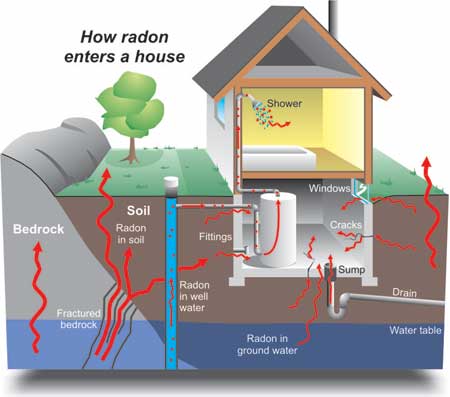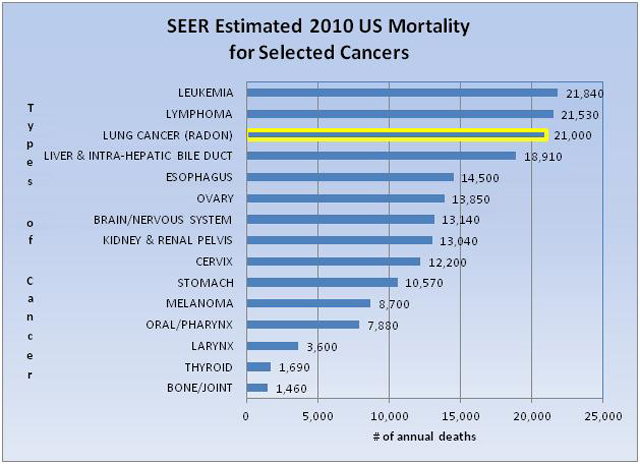When you buy a new house or move into a new office, you will most likely be provided with a radon disclosure that tells you whether the seller has any knowledge of elevated levels of radon on the property. This is a newer type of disclosure and reflects the growing awareness of the dangers of radon. Most newer buildings now are built with radon mitigation systems but many buildings built over 10 years or so ago probably were not built with these types of systems installed.
In the vast majority of cases, radon seeps up slowly over time from the ground. It’s colorless, odorless, and tasteless so it can be hard to detect without the right equipment. Years of this type of low level exposure can have dangerous health effects.
There was a very interesting post on the EPAs website blog recently about radon and how dangerous it is. The article mentioned that the discovery of radon as an indoor air issue first occurred when somebody set off radiation alarms at a nuclear power plant because his home’s radon levels were so high!
Radon is the second highest cause of lung cancer behind smoking and, as shown in the chart below, is in the same range, in terms of number of deaths annually, as leukemia and lymphoma. This kind of prevalence is quite surprising and shows the need for further awareness and prevention.
The best way to tell if you have elevated levels of radon in your home or office is to test for it. There are relatively inexpensive kits you can get for this. It’s a small step to take to ensure the safety of your family or co-workers!





